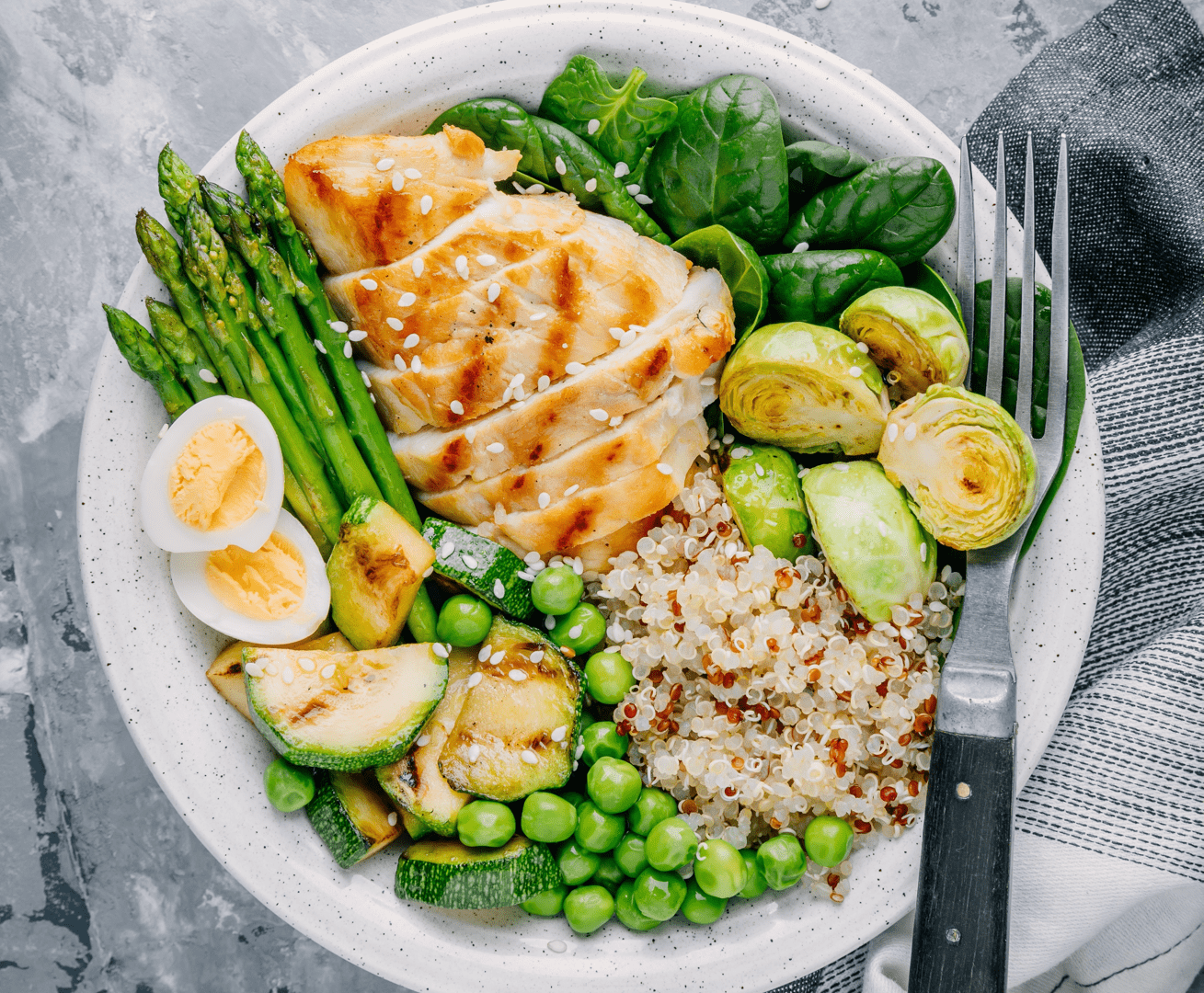March 19th officially marks the start of spring in 2020, and many of us are gearing up to clear out our homes and start fresh. While your top spring-cleaning priorities may be the dusty attic or your overflowing home office, there is one room we can overlook: our kitchen.
From half-opened bags of stale chips in our pantry to leftover Halloween candy, keeping unhealthy foods around can push us off our diet track. Here’s your quick guide to spring cleaning your fridge to help maintain your healthy eating habits.
#1: Remove and Group
To avoid kitchen mayhem, clean your kitchen section by section. Start this process with the fridge, then move on to the freezer, and then to the pantry until you have removed all of the foods you don’t want to keep. This strategy will keep perishable items from sitting out too long, or frozen foods from melting on the counter.
Once you’ve picked the first section you want to clean, remove all of the food items from that area and group them into categories onto your counter. If you’re cleaning out your fridge, you might group together fresh produce, meats and protein like eggs, drinks, dairy products, condiments, etc.

#2: Analyze Your Food Items
When our kitchens are stocked with unhealthy foods, we tend to only choose from those available options. The healthy plate method can help you limit foods that are high in sugars, refined carbohydrates, and fats – and if you clear out all of the foods that don’t fall within these guidelines, you can refresh your eating patterns!
According to the Harvard T.H. Chan School of Public Health, your meals should consist of:
- ½ plate of fresh fruits and non-starchy vegetables, like broccoli, asparagus, and fresh berries
- ¼ plate of lean or plant-based protein, like fish, poultry, beans, and nuts
- ¼ plate of whole grains, like whole wheat bread and brown rice
- A small amount of healthy oil, like olive, canola, or sunflower
- A glass of water, unsweetened coffee, or unsweetened tea
The healthy plate method also recommends that you avoid unhealthy trans fats and processed foods. You should also limit your intake of red meat, dairy products, added sugar, and saturated fats. You should also treat starchy vegetables like potatoes or squash like a grain on your plate.
When you clear out your kitchen section by section, take a close look at each item and ask yourself if it belongs on your healthy plate. Prioritize whole, natural foods over processed ones – a box of protein-rich eggs is always better than a protein bar full of added sugar.
For example:
- A package of pepperoni: toss! Pepperoni is a processed meat loaded with sodium, fat, and preservatives.
- A six-pack of sparkling water: keep! Sparkling water is a great zero-calorie drink that can satiate soda cravings.
- A package of cookies: toss! Cookies are loaded with sugar and calories, and too much sugar can have negative health impacts.
- Eggs: keep! Although many people worry about the cholesterol content of eggs, they’re a great source of protein and low in calories.
If you have condiments or other items that you aren’t sure about, read the nutrition label.
Does it have added sugar, a shockingly high sodium or saturated fat content, or lots of calories? If so, it might be best to leave it off your plate. If there is an item you can’t live without, make a note to use it sparingly.
And of course, if anything is expired, stale, or moldy, toss it.
Repeat this exercise until you have two piles of items: items to keep and items to toss.

#3: Clean and Organize
Now that you have the items you plan to keep with you, it’s time to clean and organize your kitchen!
Before placing the food items back into your fridge or cupboard, clean out the gunk! Use a mixture of warm water and mild soap to scrub your compartments, and leave a fresh box of baking soda in your fridge to soak up the odors.
Once you’re ready to organize your kitchen, you can use the healthy plate method to keep everything tidy and easy to find.
- Keep your fresh produce in their own zones. Depending on the layout of your fridge, you can use one side of your crisper to store fruits, and the other to store non-starchy vegetables.
- Store meats, eggs, and other types of refrigerated proteins together on their own shelf. Create a separate section for dairy products. For non-perishable proteins, like canned beans, designate a section in your pantry to store them.
- Group starchy vegetables and refrigerated grains, like leftover quinoa or brown rice, together in their own section in the refrigerator. For non-perishable grains, store them close together in your pantry.
- Keep healthy oils in your pantry next to your seasonings and spices. Store condiments together as well, either in the fridge or pantry depending on instructions.
Grouping these items together will make it easier for you to build a healthy plate each day. For miscellaneous ingredients, like a jar of olives, tea bags, or a pack of sparkling water, organize these ingredients into categories that make the most sense to you.

#4: Donate Unused & Unexpired Goods to Your Local Food Bank
After you clear out your kitchen, you might find yourself with a ton of items you bought and never used: canned fruits and vegetables, boxes and bags of instant mashed potatoes, rice, and noodles, jars of peanut butter and applesauce… the list goes on and on.
If these non-perishable goods don’t fit into your diet plan but are still unexpired and unopened, donate them to a local shelter, food drive, or community organization. Not only will you avoid wasting these foods, but you can help provide someone with a much-needed meal.
If you have food items that you can’t donate, make sure to compost and recycle as much as you can before you toss!
Spring is the perfect opportunity to clear out the foods that might not be the best for you and start fresh with your diet. With these tips, you can enter this season with a cleaner fridge – and healthier eating habits!





